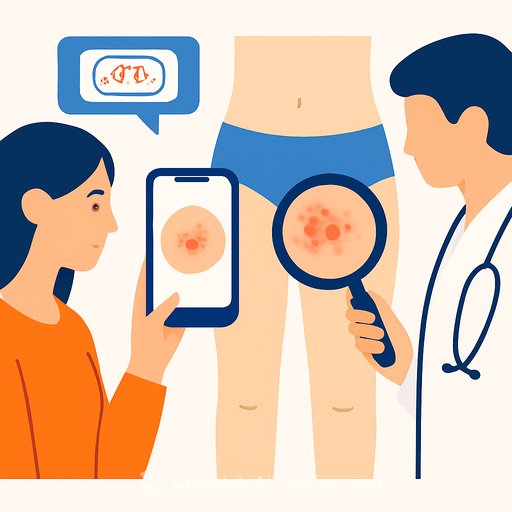AI for STIs and Anogenital Dermatoses: Promise, Proof, and Next Steps for Clinics
A comprehensive systematic review shows AI can accurately identify several sexually transmitted infections (STIs) and anogenital dermatoses from clinical images. The strongest evidence centers on mpox, with encouraging performance on herpes simplex, genital warts, psoriasis, scabies, and molluscum contagiosum.
For clinicians, the signal is clear: image-based models can help distinguish infections from look-alike inflammatory or benign conditions. But most systems are still early-stage and not ready for standalone diagnosis.
What the data show
- Mpox: sensitivity 0.96, specificity 0.98
- Genital warts: sensitivity 0.87, specificity 0.98
- Psoriasis: sensitivity 0.90, specificity 0.98
- Scabies: sensitivity 0.89, specificity 0.98
Across 140 studies (2010-April 2024), models trained on clinical images consistently performed well on the above conditions. This suggests AI could support rapid triage, differential diagnosis, and referral decisions in sexual health settings.
Where models fall short
- External validation is scarce; most models were not tested across sites or devices.
- High risk of bias is common, with heavy reliance on open-source datasets.
- Only one system moved beyond proof-of-concept; clinical validation is largely absent.
- Key gaps: syphilis, gonorrhoea, and several non-infectious dermatoses remain under-studied.
Bottom line: current tools are promising adjuncts, not replacements for clinical judgment or lab confirmation.
Practical takeaways for clinicians
- Use AI outputs as decision support, not definitive diagnosis-especially for high-stakes conditions like syphilis and gonorrhoea.
- Prioritize confirmatory testing and specialist review when AI suggests high-risk or ambiguous findings.
- Watch for domain mismatch: skin tone, anatomical site, camera type, and image quality can affect performance.
- Document AI use in the record when it influences decisions, and communicate uncertainty with patients.
Implementation checklist for research and quality leads
- Assemble diverse, consented image datasets with clear case definitions and clinician-verified labels.
- Perform external, multicentre validation with pre-registered protocols and clinically meaningful endpoints.
- Report against established guidance such as CONSORT-AI and align with ethical standards from bodies like the WHO.
- Plan prospective, real-world evaluations (workflow fit, safety events, equity across skin tones and populations).
- Define guardrails: human-in-the-loop review, escalation criteria, and fail-safes for uncertain outputs.
Clinical opportunities on the horizon
- Triage: fast identification of likely infectious vs. inflammatory conditions to prioritize care.
- Differential support: flagging look-alikes to reduce missed mpox, scabies, or psoriasis.
- Access: decision support for low-resource or high-volume clinics, with clear pathways to confirmatory testing.
What needs to happen next
- Expand research to syphilis, gonorrhoea, and under-represented dermatoses.
- Build larger, representative datasets (skin tones, ages, comorbidities, imaging variations).
- Run prospective, multi-site clinical studies with external validation and health economic analysis.
- Establish governance: privacy by design, patient consent, audit trails, and bias monitoring.
Reference
Soe NN et al. Use of AI in identification of sexually transmitted infections and anogenital dermatoses: a systematic review and meta-analysis. JAMA Netw Open. 2025;8(10):e2533512.
Further learning
Want structured upskilling on AI for clinical and research teams? Explore concise options here: Complete AI Training - Courses by Job.
Your membership also unlocks:






